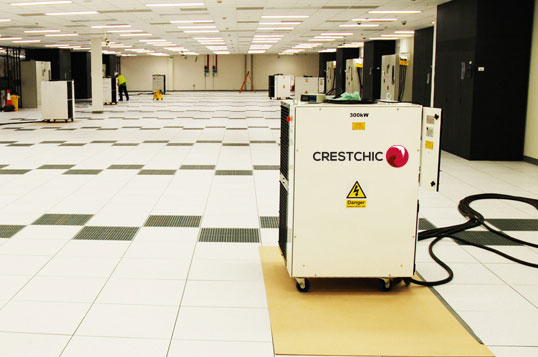Are data centre owners who have invested in UPS and backup power systems, whilst not regularly testing them, simply invested in potential failure? Paul Brickman, sales and marketing director at Crestchic gives us his insight.
The amount of power used by data centres is growing by the day, with a recent report stating they use three per cent of the world’s electricity – 40% more than the UK in its entirety.
While steps are underway to make these powerhouses more energy efficient, evidence suggests that they are becoming increasingly less reliable – with the number of potentially catastrophic and expensive power outages on a worrying upward trend.
When downtime is business critical, does a UPS offer adequate protection?
Reliability is absolutely crucial for data centres. Uninterruptable Power Supplies (UPS) are universally accepted as a piece of critical business infrastructure.
Acting as a bridge between the data centre and the backup generator, they provide instantaneous power in the event of a mains failure.
But is having a UPS enough? In 2017, a power outage at a data centre grounded 672 British Airways flights for two days, affecting around 75,000 passengers and resulting in reported losses of £58 million.
According to reports, the data centre’s backup power and cooling systems had not been adequately maintained.
The economic impact of power failure
According to US research body, the Ponemon Institute, power outages in data centres cost an average of close to £600,000.
Yet, despite reports of outages being extremely costly and sometimes business-critical, data from the Uptime Institute in 2018 indicated that one-third of all data centres suffered from downtime, up from 25% the year before.
Staggeringly, the main cause (33%) of data centre downtime was caused by power outages.
The critical role of power testing
Batteries form the heart of most UPS. Whether it uses Valve Regulated Lead Acid (VRLA), Flooded Cell or VLA batteries, or Lithium Ion batteries, a UPS requires regular testing and assessment to validate and assess the battery’s current condition and potential lifespan.
While UPS batteries can be tested in isolation, a system test in conjunction with all other standby power components is preferable.
A UPS will most likely be part of a wider system, comprising of diesel generators, automatic transfer switches, switchgear, transformers, HVAC, exhaust and cooling systems and perhaps other UPS systems.
Unless all components are working and communicating correctly, then a loss of power is a real possibility.
When factory testing is not enough: Loadbanks for commissioning
Backup generators and UPS systems are tested by the manufacturer in the factory; many businesses wrongly believe this to be enough to ensure that the equipment will operate effectively when installed.
However, with climatic conditions varying between locations, plus the impact of lifting, moving and transporting equipment, it is critical that backup power systems are commissioned accurately and tested in-situ under actual site conditions using a loadbank. Failing to do so could result in them not working when they are called upon
When air conditioning becomes a hot topic: Loadbanks for testing AC
Data centre servers exude enormous amounts of heat; therefore, the air conditioning system needs to be second to none.
Loadbanks can be used to heat load test the air conditioning systems to ensure they can cope with the heat output of the servers and keep server halls at stable temperatures and humidity levels.
To this end, resistive-only loadbanks can provide a portable and highly controllable heat source to allow air conditioning systems to be thoroughly commissioned against their design criteria. The distributed heat can then be measured, to ensure the airflow and cooling is evenly distributed and that there are no “hot-spots” around vital equipment enclosures.
The critical role of periodic testing: Loadbank testing for maintenance
Interruptions in power supply have the potential to cause operational and financial chaos. Research published by Centrica at the end of 2017 found that UK businesses without an energy resilience strategy are risking up to 17% of their revenue.
For this reason, periodic testing of backup power can make the difference between a UPS being fully operational when required and total system failure.
Resistive-reactive loadbanks are the ideal way to provide safe and accurate test conditions, allowing the operator to simulate real-world load conditions likely to be experienced by the system.
Properly planned and implemented, preventative maintenance strategies can minimise the likelihood of unscheduled breakdowns, outages and UPS failures, effectively negating the potential risk of costly commercial, reputational and legal issues.

